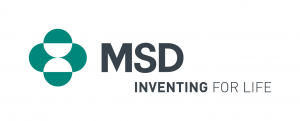New International Financial Reporting Standard Will Lead to the Comparability of Insurance Contracts
3.08.2010Company: Deloitte
The transparency of the insurance contracts’ financial reporting will greatly improve in the following years. Under the IFRS Exposure Draft published by the International Accounting Standards Board (IASB), all insurance contracts, both life and non-life, will be measured using same basis, reported Deloitte, a provider of audit and consulting services.
Nový účetní standard zavede srovnatelné vykazování pojistných smluv
Francesco Nagari, Global IFRS Insurance Leader at Deloitte, commented: “The publication of the Exposure Draft is a landmark stage in the IASB’s 13 year project to develop a consistent standard for insurance accounting.”
The publication proposes fundamental changes to the financial reporting of insurance companies applying IFRS which will make it more consistent and transparent than it has been so far. Newly, all insurance contracts will be measured using the same building blocks based on discounted probability-weighted best estimate cash flows.
“In applying the previous IFRS, insurers have been permitted to use very different methods to report insurance contracts, based on a variety of national practices. This has greatly reduced the comparability of their financial reports penalising them when they accessed capital markets with a higher cost of capital than most other industries,” commented Nagari.
The IASB has stated that there will be a four month comment period on the Exposure Draft, with the final standard due for publication in 2011. The mandatory application will be decided after the comments have been received and it will be at the earliest from 1 January 2013 when the other major change on investments accounting becomes effective. However the IASB is prepared to delay the implementation date of the two projects in parallel if necessary.
“The IASB has been working closely with the US Financial Accounting Standards Board (FASB) in developing the new IFRS. We understand that the FASB may publish its new proposals for insurance accounting later this year, meaning there is a prospect of truly global convergence in accounting for insurance contracts. We expect the FASB proposals also to be based on discounted probability-weighted cash flows, although in the discussions between the IASB and the FASB there has been a significant area of disagreement in accounting for the underlying cash flow uncertainty. The key driver on how insurance profits get reported.”
The IASB Exposure Draft contains two alternative approaches to this issue. In the first an explicit risk liability is added to the best estimate calculation of the insurance cash flows. This approach requires the insurer to make a judgment on how much profit to account based on the remaining uncertainty of the in-force: the lower the uncertainty the higher the profit (with a resulting lower risk liability). In the second approach the profit is initially deferred and then accounted for in a systematic basis every year. With this method profit recognition is independent of whether the future cash flows are more or less uncertain than last year. The IASB has requested that respondents to the Exposure Draft provide their views as to the two approaches, having expressed a preference for the first approach. The FASB instead does not support it because it is too judgmental.
“Developing the building blocks will require many insurers to reorganise their data in different ways or develop new valuation models. The internal and external communication challenges of such a new approach should not be underestimated,” emphasised Nagari. “A successful operational implementation of the new standard will require consideration of the impact on projects in other developing areas. In particular, Solvency II is based on a valuation model for insurance liabilities that is very similar to that preferred by the IASB and the Solvency II regulations require a reconciliation between the IFRS and the Solvency II valuations to be published every year,” added Nagari.







